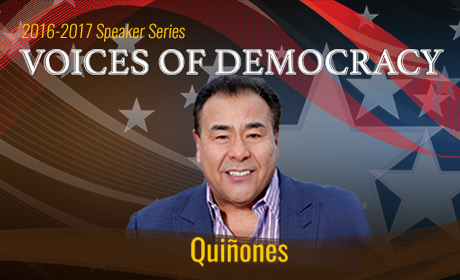Reality Show Host Discusses Upbringing

Baldwin Wallace
March 30, 2017
On March 14th, the Baldwin Wallace Enduring Questions Mark Collier Lecture Series welcomed John Quiñones, host of the award-winning NBC reality show What Would You Do? as the newest speaker in their Voices of Democracy lineup.
Born in San Antonio Texas, John Quiñones grew up in a bilingual family that spoke both English and Spanish. But he said that he did not truly learn Spanish until he started attending school, because his use of the language often made him the target of punishments.
During his discussion during the Voices of Democracy event, Quiñones spoke about how these punishments and adversities inspired the direction of his career up to this point.
Thanks to programs such as Upward Bound and positive mentorship, Quiñones earned a Masters degree at Columbia University, one of the best schools for Journalism in the country. He said that he recognized the disparities of disenfranchised individuals in the United States and other countries around the world, which includes minorities and immigrants, and used his passion to bring these issues to light.
For example, Quiñones worked on an assignment called “Sewer Children in Columbia,” which focused on the abhorrent living conditions of more than three hundred children. After being featured on Primetime news, a flood of donations came pouring in to benefit the children.
Over the course of his career, John Quiñones has worked as a journalist at radio stations, a news anchor, and now is most widely known for his role as the host of the NBC reality show What Would You Do?
In line with Quiñones’ activist work highlighting the adversities of minority and immigrant individuals, the show exhibits the alleged natural responses of bystanders to some morally questionable situations. The situations are portrayed by actors, but the bystanders are usually random civilians that happen to be in the vicinity during the time of the event.
Some reactions captured on film are positive, while others are negative. Altogether, the collection of responses usually highlight topical moral debates, providing a brief insight into American society and how individuals can react to particular circumstances.










































